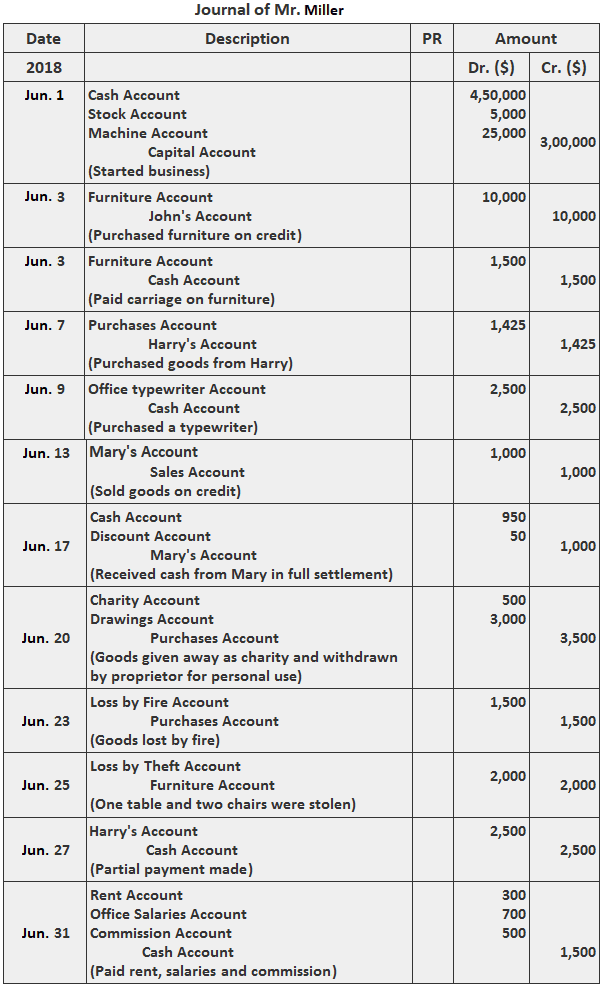The purchases account is credited in the following cases. Normally, when goods leave a business, the transactions are termed sales. However, in all of the above cases, purchases are reduced by crediting the purchases account, which is because no sales are happening. Instead, goods are leaving the business without being sold. Mr. Miller started his business on 1 June 2025. His transactions for the month of June 2024 were as follows: Jun. 1: Business started with cash $450,000, goods $5,000, and machines $25,000. Jun. 3: Purchased furniture from John for $10,000 and paid carriage for $1,500. Jun. 7: Purchased goods from Harry for $1,500 subject to a 5% trade discount. Jun. 9: Purchased a computer for the office worth $2,500. Jun. 13: Sold goods to Mary on credit for $1,000. Jun. 17: Received $950 from Mary in full settlement of her account. Jun. 20: Received goods worth $500 as donations and $3,000 withdrawn by the proprietor for personal use. Jun. 23: Goods lost by fire amounting to $1,500. Jun. 25: One table and two chairs stolen worth $2,000. Jun. 28: Paid $2,500 to Harry in partial payment of a debt. Jun. 30: Paid rent for $300, office salaries for $700, and commission for $500. Required: Record these transactions in Mr. Miller's journal.
Example
Solution

When Is Purchases Account Credited? FAQs
The purchases account is credited in the following cases: - when goods are given as a free sample - when goods are stolen - when goods are lost - when goods are donated to charity - when goods are withdrawn by the proprietor for personal use
The following figures will be affected: - cash decreases - goods increases - purchases account decreases
The company will not give any sales on these types of transactions so it is recorded with a credit to purchases account.
When goods are stolen, it is also recorded with a credit to purchases account.
For the good that is lost, we need to show the decrease in value of inventory and we record this with a credit to purchases account.
True Tamplin is a published author, public speaker, CEO of UpDigital, and founder of Finance Strategists.
True is a Certified Educator in Personal Finance (CEPF®), author of The Handy Financial Ratios Guide, a member of the Society for Advancing Business Editing and Writing, contributes to his financial education site, Finance Strategists, and has spoken to various financial communities such as the CFA Institute, as well as university students like his Alma mater, Biola University, where he received a bachelor of science in business and data analytics.
To learn more about True, visit his personal website or view his author profiles on Amazon, Nasdaq and Forbes.











